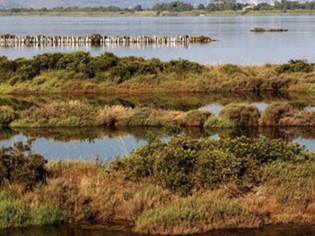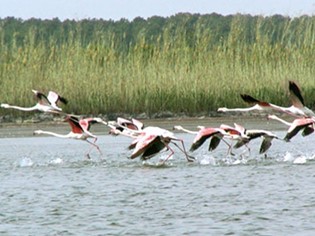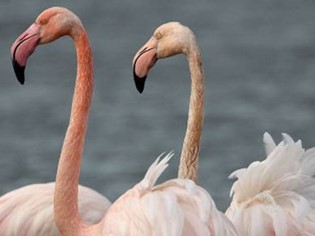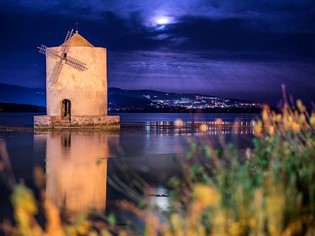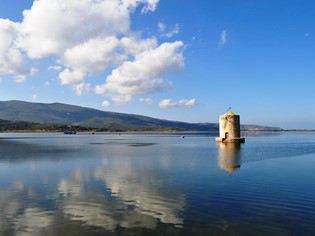ORBETELLO
“Land and sea breeze, meadow and forest breeze,
Scent of moss and seaweed, scent of grass and oyster!”
Rosso di San Secondo, Autumn hurricane, 1941
Originally Etruscan, it was then held by the Romans and subsequently came under the dominion of the Aldobrandeschi family, of Orvieto, of the Orsini family and, lastly, of the Republic of Siena. Today Orbetello is an important tourist center in the middle of the Costa Argento. It rises in the center of the lagoon by the same name and is joined to Argentario Mountain by a road built on an artificial embankment, commonly known as “the dike”, which divides the lagoon into two bodies of water (Eastern Lagoon and Western Lagoon).
The most significant buildings in the old town center are the Cathedral, situated near the main street, the Palazzo of the Chief Magistrate in Piazza Eroe dei due Mondi and the Walls, with their old city gates.
The Cathedral of Santa Maria Assunta is the main church, originally built upon the remains of an Etruscan/Roman temple, it was rebuilt in 1375 in the Gothic/Tuscan style.
The territory of the town of Orbetello is extremely varied: the damp lagoon area is separated from the sea by two dunes (the Feniglia Dune and the Giannella Dune) which are characterized by long sandy beaches, pinewoods and Mediterranean scrub, whereas, near the Talamone and Ansedonia ranges, the coast becomes rocky.
Talamone
"… a rock, a tower, a pocket of sea of purest turquoise, naught else may be said. […] If then you near the port of Talamone, the colour does not disappear, but is enriched with streaks of amethyst."
(Cesare Grandi, 1962)
Talamone is a seaside village, today almost entirely devoted to tourism, whose origins date back to Etruscan times.
Legend has it that it was founded by Telamone, father of Ajace and one of the Argonauts. However, history brings us back to Tlamu, the Etruscan name by which it was known and which was subsequently changed to Telamon by the Romans.
Part of the Republic of Siena during medieval times, it was renowned above all because Garibaldi’s Expedition of the Thousand stopped here in 1860.
Ansedonia
"I wandered through the dead city of Cosa at sunset. The Forum already lies in shadow, embraced by centuries-old olive trees. From cisterns under arches and pavements bats emerge, black sprays from the silent shipwrecks and they dissolve into the night which has fallen treacherously. It flares on the Argentario.
I ascend along the Via Sacra in slow, majestic declivity."
Bino Sanminiatelli, Days in Ansedonia, in Id., Mi dico addio, 1960
Ansedonia is a small promontory located to the south, the last offshoot of the town of Orbetello before entering the Capalbio territory.
The historical origins of upper part of its territory are associated with the remains of the old Roman city of Cosa. To this day you can still see the remains of well-preserved buildings, a stretch of the access road and of the city gate. The lower part of the town is decidedly more modern and touristy, with a series of villas and hospitality structures dedicated to seaside tourism.
At the feet of the promontory we find the submerged remains of the small Portus Cosanus and the Tagliata (known as the Etruscan Tagliata) which, by means of a slit in the rock, connected the Burano lake to the sea. This work was carried out by the Romans to avoid the silting up of the Cosa port.
